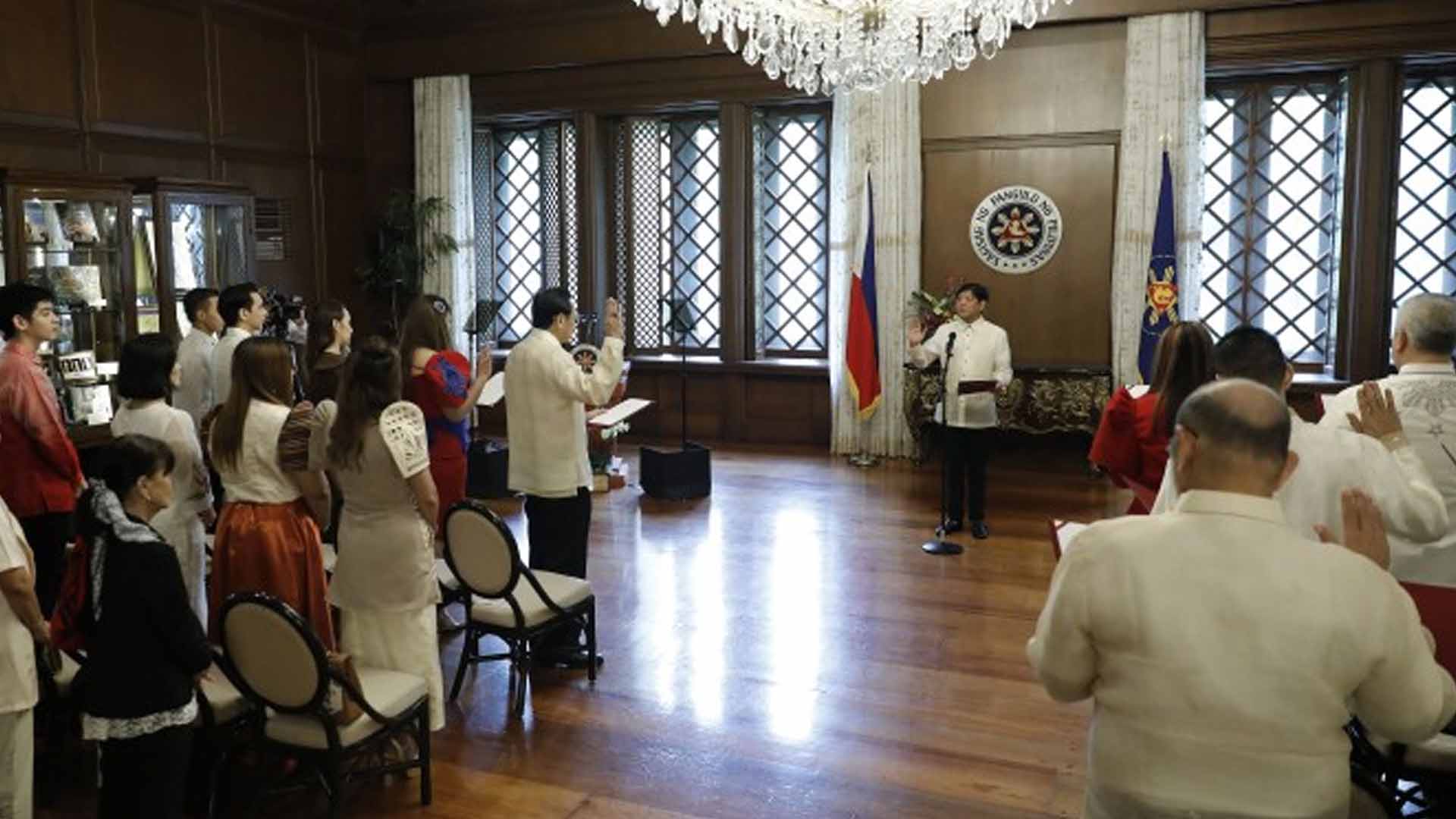President Ferdinand R. Marcos Jr. on Thursday reaffirmed his commitment to promote and strengthen the creative industries in the Philippines.
He made the vow as he acknowledged the industries’ significant contributions to the country’s economic development.
During the oath-taking of the new officers of the Katipunan ng mga Artistang Pilipino sa Pelikula at Telebisyon (KAPPT) in a ceremony at Malacañan Palace in Manila, Marcos emphasized the importance of undertaking “meaningful” initiatives to improve the environment and condition for workers in the creative industries.
“The government has a genuine and reliable partner in all of you. Since the establishment of this group, the KAPPT has upheld the welfare of local film and television industry workers, given jobs and opportunities to our fellow Filipinos and brought dynamism to our economy,” he told the KAPPT.
“So, I hope that as you secure the well-being of your colleagues, you will continue to strive to raise the standards of our films and our shows at the same time. It is also my wish that you make use and maximize the advantages brought about by new tools, new technologies, new platforms to showcase Filipino excellence and artistry on the world stage.”
Marcos pledged to help the creative industries in the post-pandemic era, noting that the use of new technologies could bring greater opportunities to local talents and make them more attractive to the international market.
“Kaya (That’s why) it’s time already that we bring that culture of the Philippines. And finally, it is the way that we define ourselves, the work that you do is what defines us Filipinos. Kaya’t napakahalaga na suportahan ang (That’s why it is very important to support the) creative industry,” he said.
Republic Act 11904 or the Philippine Creative Industries Development Act, which lapsed into law on July 27, mandates the promotion and development of Philippine creative industries by protecting and strengthening the rights and capacities of creative firms, artists, artisans, creators, workers, indigenous cultural communities, content providers, and other stakeholders in the creative industries.
RA 11904 defines the creative industries as “trades involving persons, whether natural or juridical, that produce cultural, artistic, and innovative goods and services originating in human creativity, skill, and talent, and having a potential to create wealth and livelihood through the generation and utilization of intellectual property.”
Under the law, creative industries include these domains: audiovisual media (vlogs, films, television, animatronix, broadcasts, music); digital interactive media (software and mobile apps, video games, digitalized creative content); creative services (creative research, development, and real-time artistic performances); design (fashion, toy making, footwear making, textile development, urban landscaping, jewelry making); publishing and printed media (comics, blogs, magazines, published media); performing arts (musical theater, circus, opera, puppetry); visual arts (drawings, sculptors, paintings, photographs); traditional cultural expressions (arts and crafts, gastronomy); and cultural sites (museums, cultural exhibitions). (PNA)









